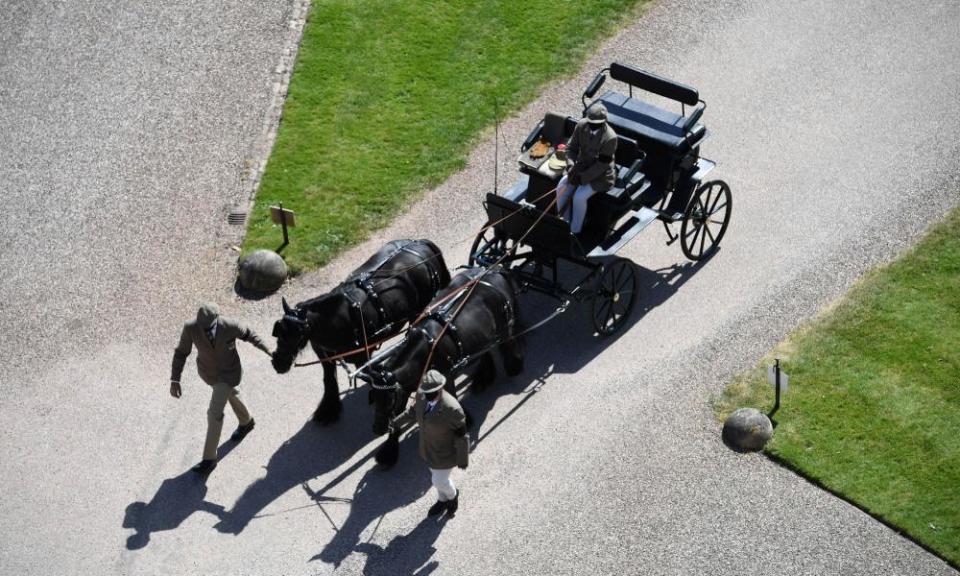From ponies to pipes: the personal touches at Prince Philip’s funeral

From his ponies’ sugar lumps pot, to a haunting Russian hymn, the Duke of Edinburgh’s funeral incorporated some quirky and historical elements.
A red-topped plastic container was placed on the box seat of his driving carriage. He used it to store the sugar lumps he gave to his Fell ponies, Balmoral Nevis and Notlaw Storm, both present along with the carriage in the castle quadrangle. Next to this lay his driving cap, whip, blanket and brown gloves.
His deeply considered choice of music reflected so many diverse elements of his life, though much had to be adapted for the four soloists, rather than the 23 boy choristers and 12 lay clerks Philip would have envisaged.
The final anthem, a translation of the Russian Kontakion of the Departed, paid homage to his blood ancestry. A funeral hymn in the Russian and Greek Orthodox church, it evoked memories of his mother, Princess Alice of Battenberg, who is buried in a Russian Orthodox convent in Jerusalem, and of his great-aunt, Grand Duchess Elizabeth Feodorovna, murdered by the Bolsheviks in 1918, and made a Russian Orthodox saint in 1981.
Related: ‘Alone in her grief’: mourning monarch is a picture of loneliness for UK papers
A Royal Navy piping party on boatswain’s whistles performed nautical gangway custom, the Still used to call crew to attention, as the duke’s modified Land Rover hearse stopped at the chapel door; and the Side, used to welcome senior officers aboard, as pallbearers carried the coffin on to the west steps and paused for a national minute’s silence; and the Carry On, the call for crew to resume duties, as the coffin was slowly borne inside, the chapel doors closing behind it.
As the bagpiper’s lament echoed off bare stone walls in a nave emptied of chairs, the velvet-draped wooden catafalque on which the coffin was placed, began slowly, almost imperceptibly, to sink. It was lowered by a lift below the floor of the 15th century chapel’s quire, driven by an electric motor.
The lift mechanism was originally installed by George III, a king with avid interest in mechanical inventions, and who created the 82ft-long royal vault beneath the chapel between 1804 and 1810. It was last used for the funeral service of George VI in 1952. But never before has its use been televised. Usually, the movement of the coffin to the vault is conducted in private. It was a “unique” moment in British royal history, said Joe Little, managing editor of Majesty magazine.

 Yahoo Finance
Yahoo Finance 